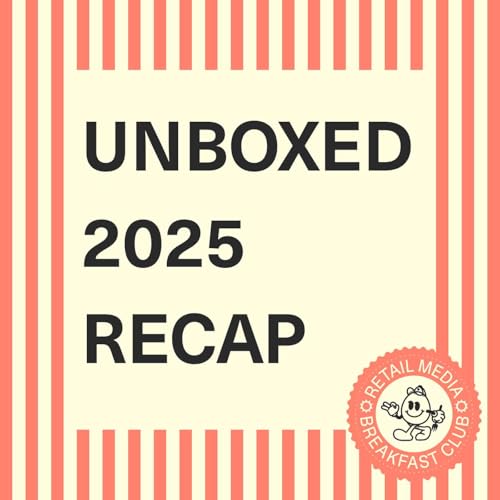What is Unboxed, really? This week, I was in Nashville for Amazon’s signature advertising event — a showcase where the tech giant reveals its latest innovations in retail media, automation, and ad tech. After taking it all in (and chatting with a few familiar faces from the industry), I’m breaking down the key announcements, the unspoken messages, and what they mean for advertisers and partners moving forward.
In this episode, I unpack my biggest takeaways from Unboxed 2025. From Amazon’s relentless reinvention of its ad business to the curious silence around Rufus, and how new “agent” tools could both empower and threaten the partner ecosystem. If you’re navigating Amazon’s retail media landscape, this recap will give you the insights and context you need to understand where the company’s heading next.
This episode is sponsored by Mirakl Ads
Timeline
[00:01:36] - How Amazon keeps evolving its advertising tools, making them simpler, smarter, and more accessible to advertisers of all sizes.
[00:02:42] - Why brands like Advantice Health say Amazon’s ad console outpaces competitors by simplifying data visualization and actionability.
[00:04:10] - A look at Amazon’s “paranoid” culture of continuous innovation, and why that mindset fuels their dominance in retail media.
[00:04:15] - Amazon takes aim at The Trade Desk with lower DSP fees, while still protecting its own walled garden.
[00:06:06] - Why Amazon’s much-hyped AI assistant Rufus went unmentioned during Unboxed, and what that silence might signal about its real-world performance.
[00:08:45] - The return (and rebranding) of agencies and tech vendors as “partners”, and how Amazon’s new AI tools could reshape that dynamic.
[00:12:14] - Reflections on Amazon’s fine line between democratizing ad tools and competing with its own partners.
Links & Resources
- Read my article Amazon Unboxed 2025: Key Announcements & Takeaways for Brand Advertisers
- Read my article for The Drum, Amazon bets on 'crystal box' transparency in ads product upgrade
- Check out the ADOTAT piece Prime Predator: Amazon DSP Takes a Bite Out of The Trade Desk
- Subscribe to Retail Media Breakfast Club's daily newsletter
- Follow Kiri on LinkedIn
 8 mins
8 mins Nov 25 202510 mins
Nov 25 202510 mins Nov 24 202511 mins
Nov 24 202511 mins 11 mins
11 mins 12 mins
12 mins Nov 18 202510 mins
Nov 18 202510 mins 10 mins
10 mins Nov 13 202514 mins
Nov 13 202514 mins

